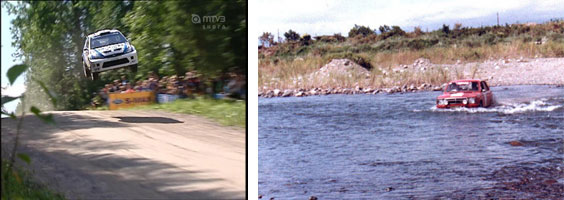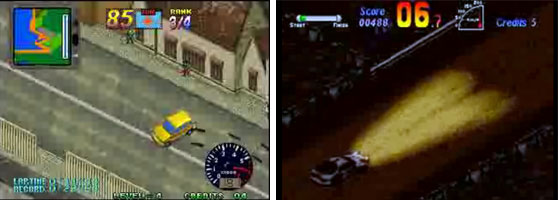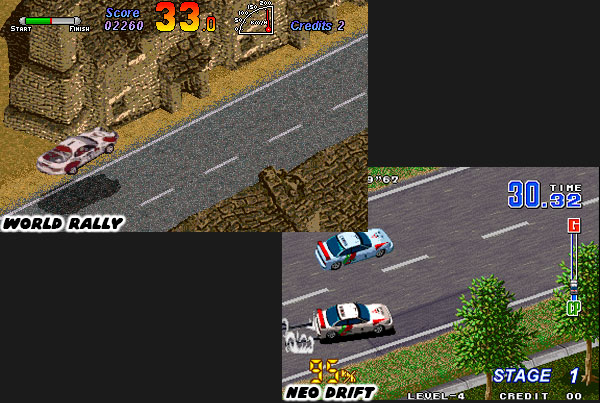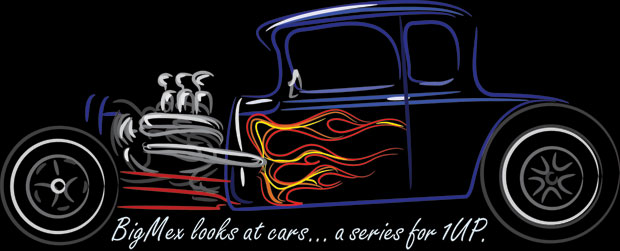The racing genre had evolved faster and has lasted longer than just about any other format in the arcades. Even with advances in graphics technology and the replacement of sprites with polygons, some of the best racing experiences have been in the isometric and overhead categories. The system that was seemingly designed to handle these experiences was the Neo Geo arcade machine. Even though the cabinet was limited by four buttons and a joystick, it didn't stop the arcade hits from coming. This didn't apply to just racers either. Platformers, fighting games, action RPG's. Just about anything you could imagine Sega or Capcom doing on separate dedicated cabinets, SNK was doing on a single machine. Driving with a joystick rather than a steering wheel took some getting used to. It wasn't as intuitive for many gamers but those that gave it a chance found the experience rewarding.

The Neo Geo games were among the first to feature rally cars and their respective racing format. Rally cars could be just about any make or model. Traditionally light and compact with a powerful engine, the rally car demands great suspension and high amounts of torque. Unlike the dragster, Formula-1 or stock car, the rally car was the ideal machine for hybrid all-terrain courses. Some rallies took place on winding mountain passes, others along desolate stretches of desert. You'd see different classes of vehicle competing at the same time, like an off-road version of GT racing. Everything from a motorcycle to a massive diesel truck could participate in the longer courses. The cars were superhuman in their ability to take a beating and come back for more. A rally track could cover asphalt, gravel, dirt, sand, rivers and snow so their arcade counterparts had to be just as diverse. For the sake of arcade gaming the Neo Geo games focused on the compact cars and European courses.

ADK was a perennial developer for the Neo Geo machine. They cranked out game after game in every genre. Their racers from the mid-90's were probably the best. OverTop is the game most people remember from the isometric rally genre. It was a solid game, filled with tons of details and even shortcuts for those willing to take blind turns. The pace of OverTop perfectly mirrored the rally experience. The cars were known for eating up courses like maniacs, sliding around turns with reckless abandon and never letting off the gas. Fans of these games, especially using the joystick had to have a similar manic appreciation for racing. A nonstop series of turns at high speed was difficult enough, in an isometric view they were downright impossible. But like any arcade game worth its salt the challenge made them oh so fun! ADK had little competition in the format but the little they had produced equally memorable experiences.
Some gamers never experienced OverTop, their first Neo Geo rally game was Neo Drift Out by Visco. It was a change-up from the previous Drift Out games which were top down instead of isometric.

The isometric engine certainly seemed like the logical evolution to the overhead racer. The cars and tracked looked much better in a pseudo-3D environment. Even though the polygon engine was the format of the future many studios couldn't afford to adopt the technology, or programming learning curve. Sega could afford to make these investments but most of the developers working on the Neo Geo architecture couldn't. They managed to supplement the models by making increasingly more detailed and original sprite-based engines. The last of the great overhead racers debuted just before the 90's. Thrash Rally by ADK was their last entry to the format before going isometric. It was a fun game but the overhead formula was beginning to feel dated.

Chequered Flag by Konami was the last great hurrah for the overhead racing format. They too switched to behind-the-car sprites or polygons soon after this game. 1988 was a transition period for gamers. The arcade experience was beginning to be captured well at home. Arcade racers needed something new to keep players interested. With the case of Konami's game it was a dramatic use of the camera. It began far above the racecourse and panned in through the clouds until it reached the track. Then the camera would pan in and out as the race happened, allowing racers to absorb the details of the track. Unlike other overhead racers which scrolled the course as the car rotated around the track, this game kept the car in a fixed position while it rotated the course around it. Some of the turns rotated the screen a full 180 degrees, causing vertigo for those that weren't expecting the screen flip. Players had never seen anything like it. The effect was very striking at the time, as it predated the Mode 7 effect on the Super Nintendo by a couple of years.
In an attempt to make an accurate GT racing game Konami added a number of details. The gear was still limited to low and high, however the car could take damage which made the driver focus on the race and avoid ramming opponents. The player was also given a fuel gauge and full car readout on the screen to know when the ideal time to pit would be. The camera would even pan in close on pit stops where we could see tiny crew sprites swap out tires and refuel the racer. It was an amazing level of detail as we could make out people in the stands, birds flying overhead and all sorts of visual cues which added layers of atmosphere to the genre. These details, not unlike the absurd amount of details that Nazca puts into Metal Slug, helped show that great graphics and great gameplay could go hand-in-hand. That the best titles were as much an art form as they were a game.


No comments:
Post a Comment